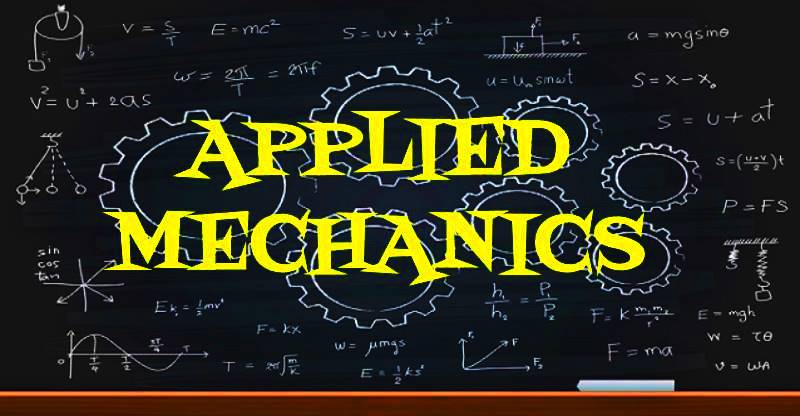APPLIED MECHANICS
- INTRODUCTION:
Concept of mechanics and applied mechanics. Explanation of mechanics and applied mechanics, its importance and necessity, giving suitable examples on bodies at rest and in motion, explanation of branches of this subject, concept of rigid bodies. - LAWS OF FORCES:
Force and its effects, units and measurement of force, characteristics of a force, vector representation, Bow’s notation.FORCE SYSTEMS:
Coplanar and space force systems. Coplanar concurrent and non-concurrent forces. Free body diagrams.
Resultant and components of forces, concept of equilibrium; Parallelogram law of forces, equilibrium for two forces, superposition and transmissibility of forces. Newton’s third law, triangle law of forces, different cases of concurrent, coplanar, two force systems, extension of parallelogram law and triangle law to many forces acting at one point-polygon law of forces, method of resolution into orthogonal components for finding the resultant, graphical methods, special case of three concurrent, coplanar forces, Lami’s theorem. - MOMENTS:
Concept of moment, Varignon’s theorem-statement only. Principle of moments-application of moments to simple mechanism, parallel forces, like and unlike parallel forces, calculation of their resultant, concept of couple, properties and effect, moving a force parallel to its line of action, equilibrium of bodies under coplanar forces. - FRICTION:
Concept of friction, laws of friction, limiting friction and coefficient of friction, sliding friction and rolling friction. - CENTRE OF GRAVITY:
Concept of gravity, gravitational force, centroid and Centre of gravity, centroid for regular lamina and Centre of gravity for regular solids. Position of center of gravity of compound bodies and centroid of composition area. CG of bodies with portions removed. - MOMENT OF INERTIA:
Concept of moment of inertia and second moment of area and Radius of gyration, theorems of parallel and perpendicular axis, second moment of area of common geometrical sections: rectangle, triangle, circle (without derivations). Second moment of area for L, T and I sections, section modulus. - LAWS OF MOTION:
Concept of momentum.
Newton’s laws of motion, their application, derivation of force equation from second law of motion, numerical problems, conservation of momentum, impulse and impulsive force (definition only). - SIMPLE MACHINES:
Concept of machine, mechanical advantage, velocity, ratio and efficiency of a machine, their relationship, law of machine, simple machines (lever, wheel and axle, pulleys, jacks, winch crabs only).
